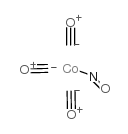cobalt tricarbonyl nitrosyl Suppliers
Total count: 1Updated Date: 2023-01-17 19:07:23

- China(Mainland)
- Contact: Yang
- Phone: 0086-021-52280163
- Email: sales@echemcloud.com
- Website: http://www.echemcloud.com
- Product Name: Co(CO)3NO
- Updated Date: 2024-07-15 12:31:57
- Purity: 98.0%
- More information
Inquiry
cobalt tricarbonyl nitrosyl
- CAS Number: 14096-82-3
- Molecular Formula: C3CoNO4
- Molecular Weight: 172.97000

Related product suppliers
Check more product suppliers